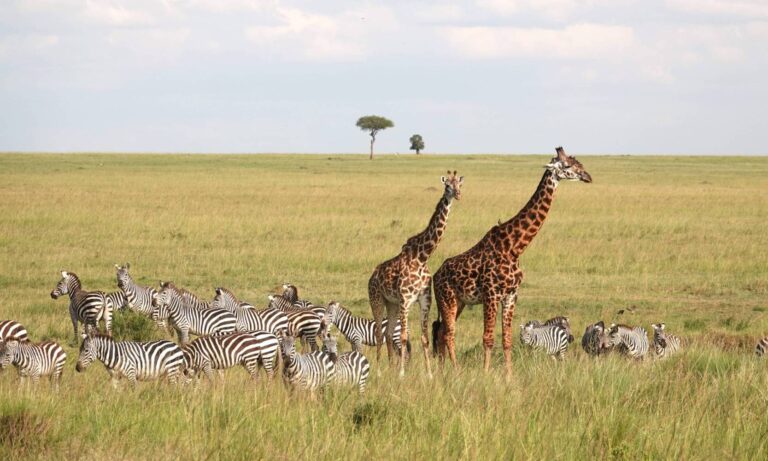
Our tours that include the renowned Maasai Mara are perfect for wildlife enthusiasts, elephant lovers, elephant foster parents & ‘would-be supporters’ of the Sheldrick Wildlife Trust.
You will experience visiting the Giraffe Centre and the Sheldrick Wildlife Trust’s Elephant Orphanage in Nairobi on an exclusive private basis mingling with the ‘nursery orphan herd’ while chatting with their Head Keeper. You will then transfer to the Sheldrick Wildlife Trust’s Reintegration Units in Tsavo whilst staying at the SWT’s private Eco-Camps; Ithumba Camp or Ithumba Hill Camp, Galdessa Camp in Voi on (selected tours only) and Umani Springs.
Here you will learn more about the ‘Orphans Project’ and experience being ‘up close & personal’ with the orphaned elephants and their Keepers, often accompanied by ex-orphans and wild elephants. Following this, you will fly directly onto the Maasai Mara Reserve, a haven for wildlife, for a traditional-style wildlife safari. Enjoy daily game drives with the opportunity to view the amazing Big Five.
The renowned Maasai Mara national reserve, affectionately known as The Mara, covers 1510 km2 (583 mi2) and is widely considered to be Africa’s greatest reserve. So where is Maasai Mara? The area is located just south of the Equator, at an altitude of 1500 and 1900 meters.
The backdrop of the Siria escarpment in the west overlooks sweeping savannas, riverine woodlands, and forests on a deceptively flat landscape that extends eastwards towards the Sekenani Hills and northwards towards the Aitong Hills. The Maasai Mara is in essence the northern extension of the Mara-Serengeti ecosystem and plays host to one of nature’s greatest phenomenons, the Great Wildebeest Migration.
Because of the quality of wildlife viewing, the Mara has for generations been the setting for hundreds of wildlife documentaries, including Disney’s African Cats, and the BBC’s Big Cat Diaries and Planet Earth. It is a wildlife photographer’s paradise and every year visitors come to capture the spectacular wildlife.
The reserve and its conservancies contain some of the highest densities of predators in Africa and this only increases as nomads and vagrants follow the huge herds back and forth through this ecosystem during the seasonal migration. The traditional Maasai community, the Maasai Tribe, are internationally known for their distinctive culture, rituals, ‘high jumping dance’, custom dress of red shukas, colourful Maasai beadwork, and being courageous warriors.
The best months to visit are January, February to miss the crowds and late June through to October.
The climate in the Maasai Mara is pleasantly warm around 25°C/77°F all year round, with cool nights, and receives 12 hours of daylight on any day of the year.
If you want to know what to pack for your trip to Kenya we’ve put together a list of essential items to help you out.
Spend two more days in Ithumba interacting with the SWT Elephant Orphans and their Keepers.